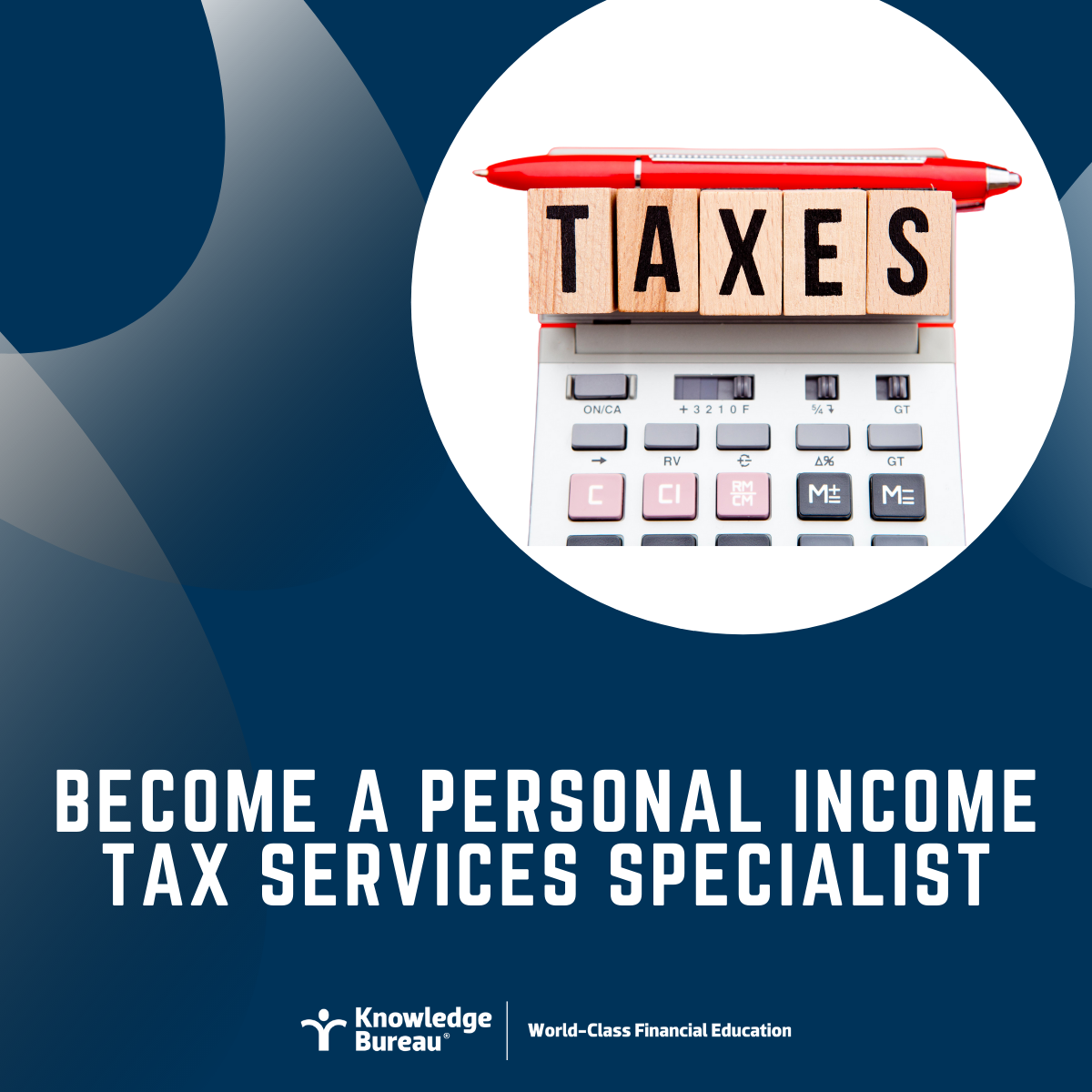Winter Study Sprint: Enrol by December 15

It’s a good time to register for our new Winter Study Session: we’re calling it a training “sprint” and it runs from December 16 to February 15. You can start anytime at your convenience, but here’s the advantage: you’ll have another professional credential under your belt before tax season. . .and you’ll save an extra $50 on certificate course tuition, too. Here’s a sneak peek at our newly published courses for the winter session:
Use code: SPRINT
Offer expires: January 15, 2021
Professional Income Tax Course – Entry Level
Income tax preparation is always timely; an essential service for families to obtain tax refunds, refundable tax credits and make tax-efficient investment decisions. In this comprehensive, yet easy-to-learn professional income tax course, learn using true-to-life case studies and student versions of professional income tax filing software. Learn how to use income tax provisions to  the best benefit of each individual and the household as a whole, filing their income tax returns accurately and with confidence.
the best benefit of each individual and the household as a whole, filing their income tax returns accurately and with confidence.
Chapter 1 | Introduction to Income Taxation in Canada
Chapter 2 | Using Software to Prepare the Return
Chapter 3 | Filing the Return
Chapter 4 | Low Income and Credit Filers
Chapter 5 | Reporting Employment Income
Chapter 6 | Claiming Employment Deductions
Chapter 7 | Families and Children
Chapter 8 | Reporting Investment Income
Chapter 9 | Pensioners
Chapter 10| New for 2020 and Beyond
Professional Income Tax Course – Advanced Level
The 2020 Professional Advanced Tax Filing Course for 2019 tax returns is a certificate course that qualifies you to prepare advanced level tax returns for individuals, investors and unincorporated small business owners. Perfect for experienced tax practitioners, it takes a deep dive into the changes on the federal and provincial tax returns, but in addition, provides an advanced theoretic journey into complex investment and small business topics. A detailed table of contents follows.
Lesson 1 | Introduction to T1 Filing and Planning
Lesson 2 | Taxpayer Identification - Profile Establishment
Lesson 3 | Family Filing
Lesson 4 | Simple Employment Profiles
Lesson 5 | More Complex Employment Profiles
Lesson 6 | Senior Profiles
Lesson 7 | Investor Profiles
Lesson 8 | The Self-Employed
Lesson 9 | Principal Residences
Lesson 10 | Tax Trends and Changes 2019-2020
Filing Proprietorship Returns
This course is designed to teach professional advisors tax preparation for proprietorships, using CRA's prescribed forms—Statement of Business or Professional Activities, Capital Cost Allowance statements, worksheets for reporting home office, automobiles, other assets, inventory control, and cost of goods sold.
Chapter 1 | Taxation of Income from a Proprietorship
Chapter 2 | Reporting Requirements: GST/HST
Chapter 3 | Claiming Business Expenses
Chapter 4 | Transactions Involving Business Assets
Chapter 5 | Home-based Businesses
Chapter 6 | Hiring Human Resources
Chapter 7 | Inventory-Based Businesses
Chapter 8 | Disposing of and Replacing a Business
Chapter 9 | Farming and Fishing Enterprises
Chapter 10 | Professionals and Partnerships
Accounting for Multiple Business Profiles
In this course, you will learn to manage the bookkeeping functions for a variety of companies, using all the modules of the program (with the exception of Payroll) to deliver financial results for the simplest to a complex company. Using the features of SAGE 50 and Intuit Quickbooks Desktop, learn advanced bookkeeping for a variety of business profiles.
Chapter 1 | Commonalities of bookkeeping for various business enterprises
Chapter 2 | Advanced Sales Tax Issues
Chapter 3 | Partnerships and Joint Ventures
Chapter 4 | Builders
Chapter 5 | Retail Outlets
Chapter 6 | Importers / Exporters
Chapter 7 | Agricultural Businesses
Chapter 8 | Trusts
Chapter 9 | Other Business Profiles
Chapter 10 | Not for Profits
Chapter 11 | Introduction to Advanced Business Issues
Canada – US Cross Border Taxation
This course focuses on emerging issues as baby boomers age, technology makes it possible for people and businesses to operate globally, and economic changes make it appealing for people and businesses to purchase investment property globally. As well as the increase in the sharing of financial information between countries, cross border taxation issues become key for cross border employment, entrepreneurship or asset ownership, as does the issue of residency and U.S. citizenship.
Chapter 1 | Residency
Chapter 2 | Immigration and Emigration
Chapter 3 | Snowbirds
Chapter 4 | Owning Property as a Non-Resident
Chapter 5 | Canada-U.S. Tax Convention (1980) AKA The Treaty
Chapter 6 | U.S. Citizenship
Chapter 7 | Canadian and U.S. Investments (including FATCA)
Chapter 8 | U.S. Estate and Gift Tax
Chapter 9 | Renouncing U.S. Citizenship
Behavioural Finance in Risk Management
This course reviews the measurement and calculation of risk and return from the perspective of clients who are now living longer lives. Largely due to advances in preventing heart disease, more awareness, and healthy lifestyles, Canadians who reach age 65 are more likely than ever to live into their 90s. As a result, retirement income planning is a much longer process in which a focus on continued accumulation and investing is as important as the tax-efficient withdrawal of funds. Capital must be preserved at the same time.
Chapter 1 | Measuring and Calculating Returns
Chapter 2 | Standard Deviation
Chapter 3 | Correlation & Beta
Chapter 4 | Calculating Portfolio Risk
Chapter 5 | The Efficient Frontier
Chapter 6 | The Capital Asset Pricing Model
Chapter 7 | Generating Risk-Adjusted Returns
Chapter 8 | Indexing and the ETF Evolution
Chapter 9 | Software Tools for Portfolio Analysis
Chapter 10 | Portfolio Management in the Context of the Current Market
Investment Tax Strategies
This course covers a strategic and tax-efficient investment income planning process which places capital accumulations in the right hands of individuals in the family. The objective is to save capital and earn investment income with tax-efficiency and then to average down the tax paid on both by arranging to share with family members within the tax rules allowed. As important: planning to avoid tax erosion of the capital at transition times.
Chapter 1 | Real Wealth Management
Chapter 2 | Tax-Efficient Investing: Planning for Income and Capital
Chapter 3 | Business Income and Asset Planning
Chapter 4 | Introduction to Income Taxation in Canada
Chapter 5 | Growing and Preserving Tax-Efficient Wealth
Chapter 6 | Registered Investments
Chapter 7 | Tax Efficient Investment Income
Chapter 8 | Real Estate
Chapter 9 | Tax Efficient Asset Transfers
Chapter 10 | Principal Residences
Chapter 11 | Tax Efficient Debt Management
Chapter 12 | Risk Management: Tax Consequences of Disability and Death
Explore other online programming options, and start your Winter Study Sprint today!
